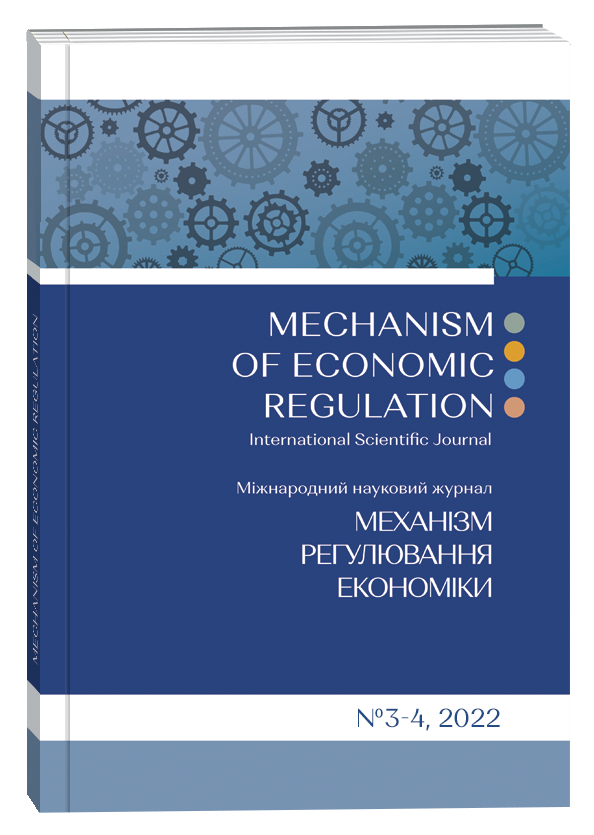PROFESSIONAL TRAINING OF STUDENTS IN THE FIELD OF CUSTOMS AFFAIRS IN HIGHER EDUCATIONAL INSTITUTIONS
Abstract
The article outlines the important role of thorough training of customs specialists and proves the need to improve their professional competencies and skills in the context of the development of integration processes. It was established that the modern conditions of economic relations, the need to create an effective and reliable way of moving goods, determine the need for the implementation of effective tools and up-to-date approaches to the development of professional competence of the personnel potential of the customs service of Ukraine. The problems of proper professional education of customs specialists led to a rapid increase in the search by scientists and practitioners for optimal forms, methods and means of education, assistance in ensuring meaningful content of disciplines, creation of comprehensive conditions for the maximum complete mastery of professional knowledge and skills in the chosen profession by the applicants. It has been established that the urgent need for proper training of customs specialists who are able to effectively solve professional tasks in the conditions of the global development of world trade has led to an increase in the need for educators and practitioners, as well as experts of the World Customs Organization, to search for appropriate methods, forms and means of professional training. meaningful filling of courses, creation of conditions for the formation of students' ability to carry out independent professional activities. The implementation and use by higher educational institutions of international professional standards of the World Customs Organization will enable the improvement and further development of domestic educational programs in the customs sphere. It is noted that economic relations in the customs sector, in the conditions of globalization, especially require unification and standardization of both requirements for professional standards of activity (procedures and processes) and educational standards. To do this, educational institutions must ensure the connection between the Professional Standards of the World Customs Organization and the higher education program, as well as ensure consistency between the requirements for knowledge of the World Customs Organization and the qualification competencies that future professionals receive when studying the disciplines provided for in the curriculum.
References
Дяченко О. О. Необхідність впровадження сучасних, перспективних, інформаційних систем в процес митного контролю. URL: http://www.sworld.com.ua/konfer34/639.pdf
Коляда С. П., Добробаба Д. Є. Аналіз системи розвитку персоналу митного органу та визначення підходів до оцінки її ефективності. URL: http://nbuv.gov.ua/UJRN/vamsue_2012_2_9
Крисоватий А., Войцещук А., Гуцул І. Диверсифікація векторів підготовки фахівців для митно-податкової сфери. Економіст. 2015. № 7. С. 19−22.
Митний кодекс України: Закон України від 13 березня 2012 р. № 4495-VI. URL: http://zakon5.rada.gov.ua/laws/show/4495-17
Мороз С. Е. Використання практико-орієнтованих технологій підготовки майбутніх товарознавців-експертів у митній справі до професійної діяльності. Проблеми сучасної педагогічної освіти. Педагогіка і психологія. 2013. Вип. 40 (1). С. 207−214.
Нагорічна О. С. Навчальна практика як основоположна складова формування професійної компетентності працівника митної служби. Тези доп. І Всеукраїнського наук.-практ. круглого столу «Практика як основоположна складова підготовки фахівців галузі знань «Економіка та підприємництво»: діалог із роботодавцями». Хмельницький : ХКТЕІ, 2009. С. 71–74.
Офіційний сайт Київського національного торговельно-економічного університету. URL: https://www.knteu.kiev.ua
Пашко П. В. Митна безпека (теорія, методологія та практичні рекомендації) : монографія. Одеса : АТ «Пласке», 2009. 628 с.
Dyachenko O. O. Neobkhidnist’ vprovadzhennya suchasnykh, perspektyvnykh, informatsiynykh system v protses mytnoho kontrolyu [The need for implementation of modern, perspective, information systems in the process of customs control]. Available at: http://www.sworld.com.ua/konfer34/639.pdf [in Ukrainian]
Kolyada S. P., Dobrobaba D. Ye. Analiz systemy rozvytku personalu mytnoho orhanu ta vyznachennya pidkhodiv do otsinky yiyi efektyvnosti [The analysis of the development of personnel of customs authorities and determination of approaches to assessing its effectiveness]. Available at: http://nbuv.gov.ua/UJRN/vamsue_2012_2_9
Krysovatyi A. І. (2015) Dyversyfikatsiia vektoriv pidhotovky fakhivtsiv dlia mytnopodatkovoi sfery [Diversification vectors training for customs and tax area]. Ekonomist, № 7, pp. 19–22. [in Ukrainian]
The Verkhovna Rada of Ukraine (2012), «Custom code of Ukraine». Available at: http://zakon5.rada.gov.ua/laws/show/4495-17
Moroz, S.E. (2013), «Using practice-oriented training of future commodity technology experts in customs matters to the profession», Problemy suchasnoyipedahohichnoyi osvity. Pedahohika i psykholohiya, vol. 40 (1), pp. 207−214.
Nahorichna O. S. (2009) Navchalna praktyka yak osnovopolozhna skladova formuvannia profesiinoi kompetentnosti pratsivnyka mytnoi sluzhby [Training practice as a fundamental component of the formation of professional competence of a customs official]. Khmelnytskyi, pp. 71–74. [in Ukrainian]
Ofitsiinyi sait Kyivskoho natsionalnoho torhovelno-ekonomichnoho universytetu [Official site of Kyiv National University of Trade and Economics]. Available at: https://www.knteu.kiev.ua [in Ukrainian]
Pashko, P. V. (2009), Mytna bezpeka [Customs security], Plaske, Odesa, Ukraine.


